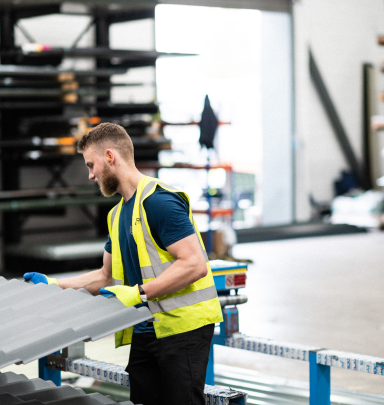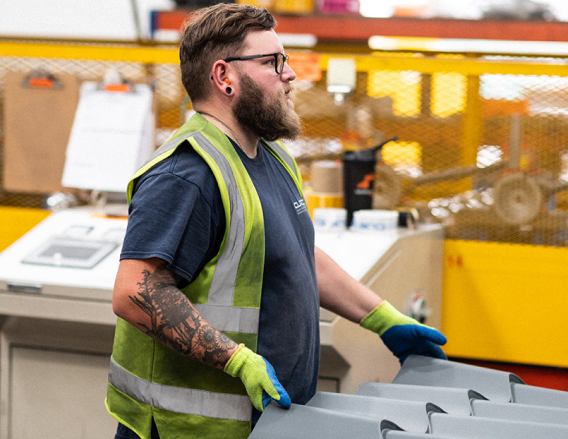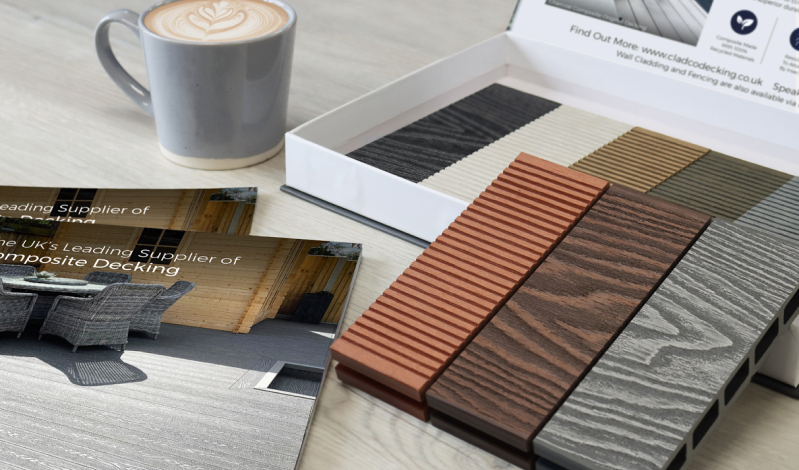Handling and Cutting Sheets Safely
Cladco Profiles will deliver your Sheets to you at the exact size you need them, so providing you send over the correct measurements, you shouldn’t need to cut them yourself. We do understand, however, that sometimes this cannot be avoided, and you may need to further trim your Cladding. In this instance, we have some recommendations which should aid you in cutting your Sheets effectively in the shortest amount of time possible, with no mistakes.
If necessary, we recommend seeking advice from a professional prior to cutting Sheets. Firstly, you’ll need to ensure you take measurements of the roof, so you know exactly how much you need to cut. Never guess this step, it could end up being a costly mistake. Mark the cut-lines with a felt-tip pen or a Sharpie: a pencil won’t do this time.
If you need to cut your roof, we always recommend doing so on the ground. Cutting metal while on a roof is dangerous and could result in serious injury. Lay your Sheets face down across padded supports. Doing this will prevent scratching and will make the process much easier.

Choosing The Right Tools
When choosing your tools, if necessary, we recommend seeking advice from a professional. You may wish to use a tool that will produce as little heat as possible. Heat can damage the coating on the Sheet and thus cause discolouration, scratching and, in some cases, could ruin the Dripstop anti-condensation felt membrane, if selected at time of purchase.
For longer, straighter cuts, use a circular saw with a fine-tooth metal blade that produces a cold cut. If you only need to make smaller cut-outs and openings, or for cuts that are not straight, a jigsaw or reciprocating saw may be recommended by a professional.
In some instances, you may be recommended to use an angle grinder with a small tooth blade or disc when cutting metal classing. Reciprocating nibblers are widely used in the roofing trade, and these produce an excellent, clean cut.
As you can see, there are a wide variety of tools you may wish to use when cutting Sheets, however you must always seek advice before cutting from a qualified professional. Cladco accepts no responsibility for any injury or accident that may have occurred by using the above tools. We do not recommend any specific tools, but recommend gaining advice from a qualified professional.
Remember to remove any swarf with a brush to prevent damage to the Sheet.

Roof Safety & Protective Equipment
Roofing work can be hazardous. Caution should be exercised and appropriate safety precautions taken including the wearing of suitable protective gloves, clothing, footwear and a hard hat.
Two people may be able to lift a single Sheet at a time off a delivery truck, depending on their own physical ability and weather conditions. This will also depend on the length of Sheet and weight (refer to the product specifications). Extra care should be taken in windy or exposed areas. The edges of Sheets and Flashings can be sharp so remember to wear protective gloves with rubber palms for grip.
UK law requires employers and self-employed contractors to formally assess the risks associated with each Roofing job and, before starting their work, to plan and organise their work so that it is carried out in a safe manner. Further information on this, working at heights, and other applicable legislative requirements can be found by visiting the Health and Safety Executive’s website www.hse.gov.uk.
While this isn’t a definitive guide to keeping yourself safe while working on a roof, we have included some basic roof safety tips here. Cladco Profiles accepts no liability for any loss or injuries caused while following this guide. Please ensure you adhere to health & safety best practice at all times.
Care should be taken when handling Sheets to prevent damage and injury during installation. If possible, mechanical handling equipment should be used. Dragging one Sheet’s edge across another when unloading may cause scratching of the Sheet below, so make sure the Sheet is lifted clear and not dragged. Any packaging should be removed before lifting Sheets onto a roof. Cladco Profiles accepts no liability for any loss or injury caused by following the information in this guide. If you are unsure about how best to install your roof, we would recommend contacting an experienced professional.
Lifting Metal Roof Panels
When lifting Roofing Sheets, ensure you have sufficient a number of people physically able to lift the Sheets and this depends on the length of the Sheets you have ordered. Please note that weather coditions must be considered before handling. The longer they are, the more risk there is of them bending in the middle, so be aware of this when attempting to lift. It’s always best to look into using mechanical handling equipment for the best results and to help remove any strain on yourself and whoever is helping you.
Here at Cladco, we always want to ensure you have the best possible experience when working with our products, so be sure to browse our full Help & Advice section for guidance on our products. If you have any queries, then please contact us directly via phone or email and we’ll help as quickly as we can to respond. Please check out our FAQs page.



